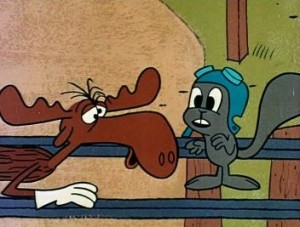By Bob Hicks
The big cultural flap out of Washington, now that people have mostly moved on from the Smithsonian chief’s craven caving-in to reactionary blowhards over David Wojnarowicz‘s ant-crawling video at the National Portrait Gallery, comes from the flip side of the channel: Rocco Landesman, boss of the National Endowment for the Arts, has been busy telling people that there’s too much theater in America for the demand, and it would be a good thing if a bunch of companies went out of business. (That theater companies are continuously going out of business without any help or hindrance from the NEA, and starting up again in new combinations, appears to have escaped his notice.)
 Locally, arts marketing whiz Trisha Mead sounded the alarm (she was even quoted in the New York Times) and Art Scatter’s brother in arms, Barry Johnson, has been carrying the conversation forward with several posts at Arts Dispatch. Mr. Scatter has even sprinkled a couple of comments into his threads.
Locally, arts marketing whiz Trisha Mead sounded the alarm (she was even quoted in the New York Times) and Art Scatter’s brother in arms, Barry Johnson, has been carrying the conversation forward with several posts at Arts Dispatch. Mr. Scatter has even sprinkled a couple of comments into his threads.
Barry’s worked up a fine lather, and for good reason: with friends like this, etcetera etcetera etcetera. Keep an eye on Arts Dispatch, because we have a feeling a lot more is going to be pouring out on this subject, and in Portland, AD has become Information Central on this topic.
Here at Art Scatter, we noted a year and a half ago when Congress confirmed Landesman for the top arts job that things were bound to get stirred up.
 All of this is an honor, and the awards ceremony is bound to be a lot of fun. But as writers tend to do, most of these people have already moved on to new projects. Acito is shifting his attention to New York and a new life in the world of Broadway musicals. Taylor’s had another play, The Strange Case of the Miser at Christmas, on stage for a first reading. And Dixon has just released his newest novel, The Ingram Interview, through
All of this is an honor, and the awards ceremony is bound to be a lot of fun. But as writers tend to do, most of these people have already moved on to new projects. Acito is shifting his attention to New York and a new life in the world of Broadway musicals. Taylor’s had another play, The Strange Case of the Miser at Christmas, on stage for a first reading. And Dixon has just released his newest novel, The Ingram Interview, through  Perhaps you’ve seen some on your travels to England: those little bursts of architectural whimsy sometimes found on the rolling estates of members of the minor nobility, cozy towering playhouses for the eccentrically and unaccountably rich. They serve no purpose other than the whim of their owner/designers — in a sense, they’re the original conceptual art — and they can be, when your mood and the play of light are right, delightful.
Perhaps you’ve seen some on your travels to England: those little bursts of architectural whimsy sometimes found on the rolling estates of members of the minor nobility, cozy towering playhouses for the eccentrically and unaccountably rich. They serve no purpose other than the whim of their owner/designers — in a sense, they’re the original conceptual art — and they can be, when your mood and the play of light are right, delightful.

 This particular wayside shelter is a few miles south of
This particular wayside shelter is a few miles south of  Mr. Scatter is a coffee man, not a tea man, and so if he happens to come across a moose in his northern wanderings, he will not shoot. Instead he’ll pause to pass the time of day and enquire politely after the health of his old friend,
Mr. Scatter is a coffee man, not a tea man, and so if he happens to come across a moose in his northern wanderings, he will not shoot. Instead he’ll pause to pass the time of day and enquire politely after the health of his old friend, 
 And on the second morning he got up, made coffee, and wrote his review, which was subsequently published (the review, not the coffee) in The Oregonian. And the review praised some and quibbled some, and was not, in the terminology of the great god Variety, boffo.
And on the second morning he got up, made coffee, and wrote his review, which was subsequently published (the review, not the coffee) in The Oregonian. And the review praised some and quibbled some, and was not, in the terminology of the great god Variety, boffo. Black Swan is not a film about ballet.
Black Swan is not a film about ballet.
 Two years ago, in
Two years ago, in